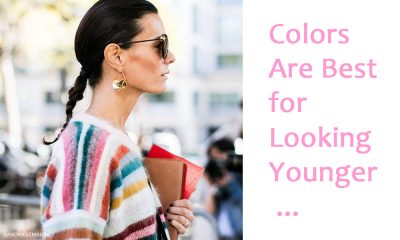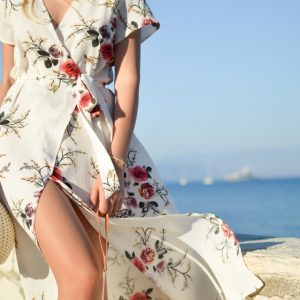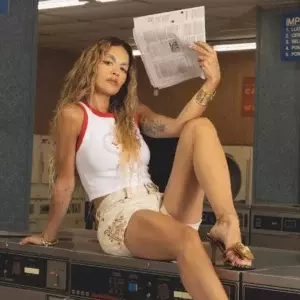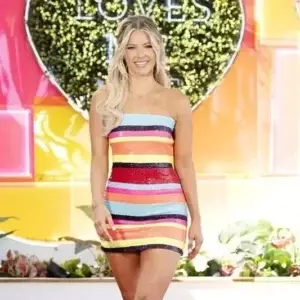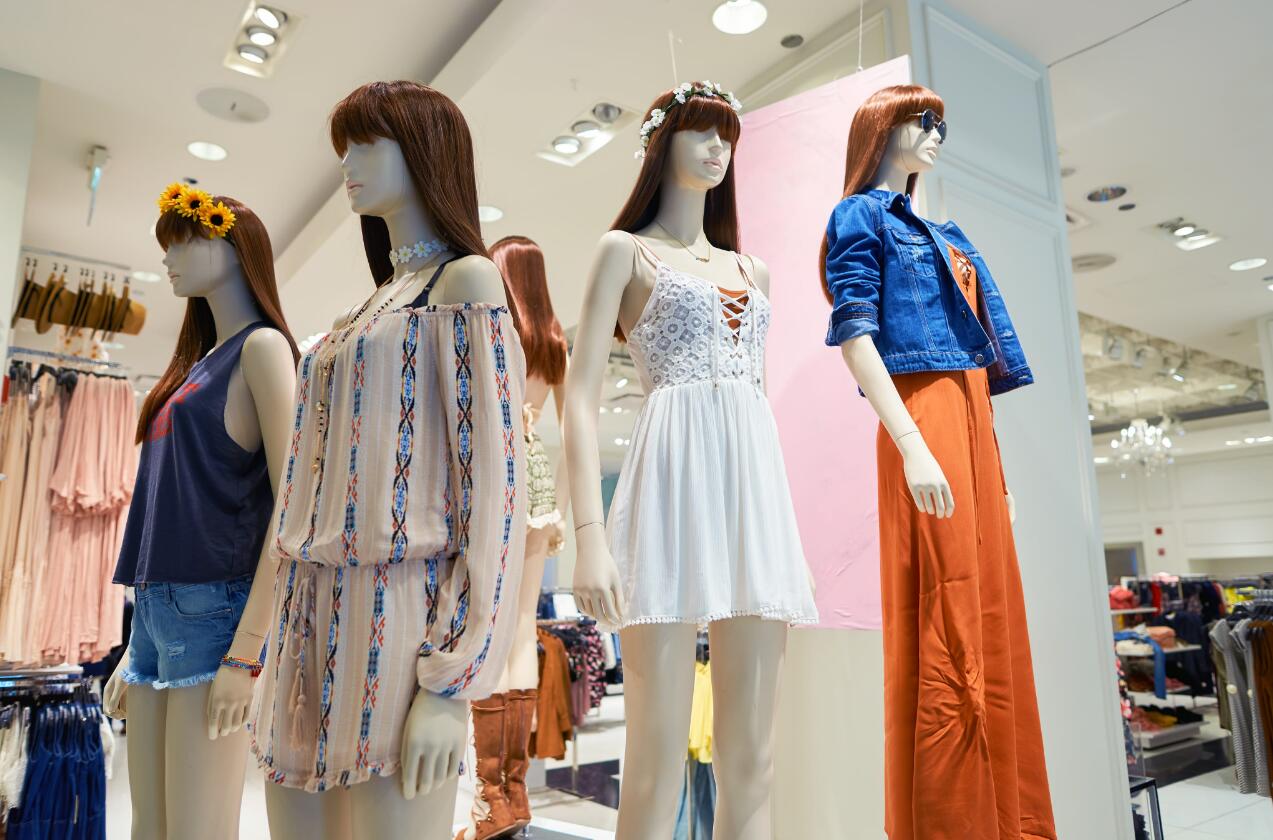
You may have noticed that the phrase, sustainable fashion, is cropping up more and more in contemporary fashion articles.
And yet these same articles rarely explain exactly what ‘sustainable fashion’ means.
At its most basic, sustainable fashion means using recycled garments and natural materials to produce textiles that are well-made and last for years.
This avoids the constant manufacture of harmful synthetic fabrics used in ‘fast fashion’ clothing, and discourages us from throwing away good clothing just because we think it isn’t ultra-trendy.
Because of ‘fast fashion’, we are discarding a lot of wearable and attractive garments each year, which are not bio-degradable and so are creating vast, toxic landfill sites.
What are ‘fast fashion’ & ‘slow fashion?’
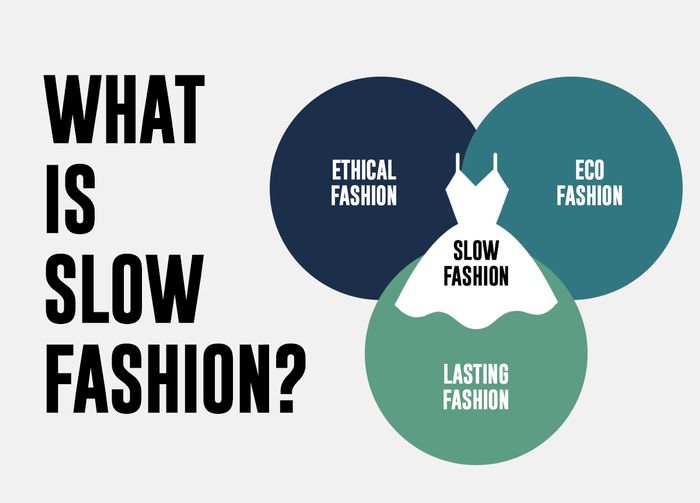
There’s a lot of confusion about the terms, ‘slow fashion’ and ‘fast fashion ‘, too, so this article will explain what these phrases mean and why we all need to know what’s happening in the fashion industry.
The fact is that ‘fast fashion’, is one of the prime industries for damaging the environment.
Cheap, fast-changing fashion garments is the most eco-destructive way to produce clothing.
It wastes millions of tons of water during the dyeing process, and the manufacture of synthetic fabrics harms the planet with chemicals used to make artificial textiles.
Furthermore, having to transport new fashion styles to stores and warehouses every week, wastes fuel and leaves a huge carbon footprint.
Not surprisingly, the fashion industry’s carbon footprint accounts for more than 10% of global greenhouse gas emissions!
So the fashion industry is destroying our environment at a frightening pace and change is needed.
How to support sustainable fashion?
Unfortunately, the fashion industry is a traditional world in which manufacturing practices and trading deals are slow to change.
But fortunately, new generation companies are forcing in eco-friendly practices which use recycled materials, and organic textiles made from organic cotton, linen and silk.
And this is one of the best ways to re-set the industry’s path towards an eco-protective goal.
So we can all play our part by favoring the brands that produce sustainable clothing intended to last for years and avoid buying cheap, fast fashion which we discard after just one season.
Save money in the long-term
The fashion industry has really sped up in recent years until it’s almost forcing us to be constantly buying frequently changed ‘fashionable’ clothing.
And that’s only happening for one reason, the more new fashions they put in the shops, the more profit they make from us!
Lots of women are over-spending on their clothing budget, in an effort to keep up with the latest styles.
And that’s a shame when we still have perfectly good fashion clothes in our wardrobe that we haven’t worn much.
The best solution is for both the industry and we customers to shift to sustainable, slow fashion.
Wear what suits you
Do what clever, stylish women have always done and buy the colors that suit you and the styles that flatter your figure and the image you want to project.
Don’t just buy each season’s new fashion color and the styles pushed by retailers to make you buy a whole new set of garments every few months.
We’ve all seen women wearing colors and styles that don’t suit them, just because they are the latest trend!
Pick and choose from the latest fashions to get a wardrobe that makes you look great, but try not to be a slave to every single new trend.
Some brands have already shown willing to slow down the mad rush from one season to the next.
And instead of having 4 fashion shows a year, for spring, summer, autumn and winter – they have cut it down to just two fashion seasons per year – summer and winter.
It’s a really great idea, and such an easy way for us all to help protect our precious planet.
How does sustainable fashion benefit everyone?
1. Fair wages & ethical working conditions
The ‘rag trade’ as the fashion industry is often called, is notorious for employing children and for placing women and children in unsafe, ‘sweat shop’, working conditions.
This means small, crowded rooms, without adequate heating or ventilation, where women and children are forced to work long hours for extremely low pay.
So when we buy cheap, fast fashion clothing we are unwittingly contributing to poor health and safety conditions, long hours and workers being paid far less than a living wage.
On the other hand, sustainable clothing labels guarantee their customers that workers are given safe conditions, reasonable working hours and overall, fair wages for all employees.
2. Sustainable fashion saves animal lives
All animals have their part to play in the global eco-system and when animals are killed to make fur coats or leather clothing and shoes, this disrupts the natural order and causes imbalance to the eco-system.
Sustainable fashion has now developed a wide range of innovative, cruelty-free and vegan leather-like materials to end the use of animal-skin leather.
And this is a huge step forward in our need to stop exploiting animals and start protecting endangered species that enrich our world and preserve the delicate global balance.
3. Sustainable fashion slashes CO2 & greenhouse gas emissions
Most fast-fashion clothes are made from petroleum-based materials, like nylon, polyester and acrylic, which use a large quantity of energy to produce and to dispose of.
So this creates an enormous carbon footprint from manufacture, transport and textile waste degrading slowly in landfill sites all over the globe.
However, sustainable fashion materials are all bio-degradable because they are made from natural cotton, linen, silk or recycled materials.
And there are now various natural, vegan leathers made from mushrooms and plants, which decompose naturally and enrich the soil.
Sustainable organic materials don’t need harmful chemicals to manufacture them and they use far less water and energy and are grown without fertilizers or pesticides.
4. Sustainable fashion cuts waste
Every single second around the world, a garbage truck of fabric waste is dumped at a landfill or burned to get rid of it.
And this vast amount of waste is produced by fast fashion brands, which bring out new fashion trends every week to persuade customers they need to buy more clothes.
And by selling us cheap quality clothing that falls apart quickly, they create a market where we constantly need to replace pilled acrylic sweaters and clothing that looks shabby after a few wears.
But if we buy from sustainable labels that offer good quality clothing made from durable materials, we actually save money in the long-term and look better in clothes that don’t look shabby.
And sustainable fashions offer trendy items, but don’t switch the fashions every month, so sustainable clothing looks fashionable for several years.
5. Sustainable fashion saves water
The fashion industry is one of the largest water consumers around the world, using it for the manufacturing process, dyeing, finishing and washing.
It’s difficult to imagine, so this example may help – the manufacture of just one cotton shirt needs about 2,720 liters of water and one pair of jeans uses up 7,000 liters!
In addition to consuming vast amounts of water, textile manufacture harms the environment by polluting fresh water with toxic chemicals that inevitably flow into general water-courses.
And that is why most sustainable fashion brands have a water-budget that strictly limits the quantity of water used in garment production.
Furthermore, sustainable fashion brands focus on organic textiles made from hemp, linen and organic cotton, which require very low amounts of water to produce.
Top 6 Sustainable Fashion Examples
Here are some of the current terms used to describe fashion brands and what they actually mean.
1. Eco-friendly and ‘Green Fashion’
Eco-friendly and ‘green fashion’ promote replacing plastics with bio-degradable, eco-friendly, natural fibers that actually feed the environment when placed in landfill sites.
The future of ‘green fashion’ is looking very positive as more and more companies switch from polyester to organic hemp, cotton, kelp seaweed leather and mushroom leather.
Green fashion is trying to reverse the damage done by 90% of clothing brands which still use plastics and non-biodegradable materials.
So it makes sense to support eco-friendly brands as each year more than 70 million barrels of oil are needed to make polyester fibers.
This polyester eventually gets disposed of in the seas where it enters the food chain and kills sea-life.
2. Slow Fashion
‘Slow Fashion’ is intended to highlight the alternative to damaging, ‘fast fashion’, clothing.
Slow fashion refers to artisanal fashion clothing, which is hand-made in a slower and energy-saving method, by skilled seamstresses and designers.
This is the opposite to fast-fashion garments which are produced in their thousands in vast, industrial factories that consume a lot of energy.
3. Upcycled Fashion
‘Upcycled fashion’ means taking discarded clothing and re-using the fabric to make new garments, which may be highly original and certainly make unique, boho and quirky fashion items that are very popular.
Upcycled fashion is a favorite of modern designers and celebs, who view it as a new type of luxury fashion, creating rare, one-off garments.
However, the benefits and downside of upcycled fashion are a delicate balance:
- Upcycling reduces waste
- Re-uses discarded materials that would just end up in landfill sites
- Reduces carbon and toxic gas emissions from manufacturing processes and transport
But on the other hand, there is a significant downside:
- Upcycled clothing releases double the number of micro-fibers into the oceans, which pollutes the sea and enters the food chain killing sea-life and humans
- Some scientists believe that upcycling required more energy and chemicals than are used in producing new materials
- Expensive to buy
4. Swapping, Sharing, Thrift Shopping & Renting Fashion Clothes
One of the best ways to practice sustainable-fashion is to use charity shops, or to swap, share or rent clothes.
You’ll get far more clothing for your money and there’s no doubt that thrift shops in good areas are packed with luxury clothes at super-low prices.
And gorgeous vintage clothing is also a great way to support sustainable fashion, although you may have to pay more than you do for thrift shops.
5. Ethical and Fair-trade Fashion
Sustainable brands are focused on ethical and fair-trade practices, which take care of all the people working in their companies, not matter where they are located in the world.
They value protection against child labor, safe working conditions, fair wages, gender rights and all aspects of social justice and general welfare.
They ensure that supply chains are carefully maintained, so they can build trust with local farmers who can depend on getting a fair price for the raw materials, year on year.
6. Conscious Fashion
Conscious fashion is the easiest way to support sustainable fashion, and it allows us all to stop the problems caused by fast fashion and save a lot of money, too!
Basically, it’s all about wearing your clothes for several seasons, instead of buying cheap clothes and then throwing them away after only a few wears.
Since fast fashion hit the market, we have started to wear garments for half as many times as we did 15 years ago!
Now a lot of that is because when you buy cheap, fast fashion, the quality of the fabric is often far below what we used to expect from new clothes and fast fashion goes shabby very quickly.
So instead of chasing the latest trends, take a good look at the quality of the fabric before you buy and decide whether it will last, or if it’s going to degrade badly after a few washes.
How to Identify Sustainable Fashion Brands?
There are three main rules a label must adhere to if it aspires to be a sustainable fashion brand:
- Ethical practices providing safe working conditions and fair wages for all employees
- Not using plastic or any synthetic materials
- Not using animal leather or any product tested on animals
And it’s important that all three of these practices are strictly followed.
Be wary of ‘greenwashing’
‘Greenwashing’ is a very sly trick some companies use to pretend to be eco-friendly and sustainable, when they are actually not at all ethical or environmentally protective!
Some companies claim in their marketing that they are ‘certified’ for using natural materials, but you can get one of these certificates just by submitting a single, organic cotton T-shirt!
How to check garments aren’t from a ‘greenwash’ brand?
- Find out who issued the certificate – is it a commercial or an independent institution?
- Commercial companies sell certificates to anyone, but independent bodies award them for excellence
- Read the ‘About Us’ and check out their philosophy
- Check which retail platform the brand uses – it should be on special marketplaces for vintage clothing and sustainable fashion
- Find out where the materials in products you want to buy come from
- Ask how organic or sustainable the materials are
- Ask about working conditions and fair wages
- Email the company with your questions and if they don’t answer, don’t trust them
Top 10 Sustainable Fashion Brands in the World
1. Eileen Fisher – USA
- Ethical Clothing Brand
- Fair Trade Certified
- Sustainable Manufacturing
- Inclusive sizes for all
The Eileen Fisher brand is a leader of all ethical and sustainable fashion labels, which keeps a close eye on its overseas supply chain to ensure fair wages are always paid.
This label plans to reduce greenhouse gas emissions created by garment manufacture even more by 2025.
And they aim to cut the amount of CO2 caused by deliveries by 25%, so they are ambitious eco-warriors.
And they make clothing for all sizes from XXS to 3X including special petite collections.
2. Pact Clothing – USA
- Fair Trade and B Corp Certified
- Organic Cotton
- Inclusive sizing
Pact is a sustainable clothing brand that’s totally focused on ethical business practices and making the world a better place.
Recommended and officially certified by B Corp, means the entire Pact supply chain is transparent and frequently checked.
Pact grows and harvests organic cotton and follows its progress right through to the final garment sewing, ensuring the manufacturing system is eco-friendly and fair.
All of Pact’s soft T-shirts, dresses and lingerie are 100% non-GMO cotton which is good for you and the farmers who grow it!
3. Mara Hoffman – USA
- Ethically and locally made
- Eco-friendly materials
- Inclusive sizing
- Recycled packaging
Mara Hoffman is a slow fashion brand that displays an exuberant, playful and colorful fashion aesthetic.
It features understated garments, which are designed to flatter the feminine figure and showcase richly textured fabrics.
The designs are inspired by Mara’s personal travels and the mythology she has encountered in exotic countries, so you’ll see unique details and touches of whimsy in her sustainable collections.
All the clothing is hand-crafted by talented artisans in New York City, with punchy prints, abstract art and tribal prints enriching the glorious collections.
Mara Hoffman sustainable clothing includes everything from color-blocked skirts, flattering dresses and high-waist bikinis for iconic style!
4. Patagonia – USA
- Fair Trade Certified
- Bluesign Approved
- B Corp Certified
- Organic Cotton
- Upcycling Program
- Repair service
Patagonia clothing is known as one of the top sustainable clothing companies in the world, and was one of the earliest to take up the issue of environmental protection and ethical business in the fashion industry.
And as such, Patagonia was a pioneer of recycled materials and ethical organic cotton.
Furthermore, Patagonia is leading the way with a repair service to outdoor clothing and gear, which adds even more sustainability!
The certificates awarded to Patagonia are proof of their close supervision of safe working conditions, fair wages and good quality clothing for consumers.
And finally, Patagonia will buy back its clothing when you are done with it, and re-sell it to return to you a purchase credit you can use to buy another pre-owned garment at a low price.
5. Nanushka – Hungary
- Animal-friendly
- Ethically Sourced
- Organic Textiles
Nanushka designs are produced in Budapest and manufactured in Europe, giving their collections a superb blend of East and West culture.
The designer’s main muse comes from the variety of spiritual journeys she has undertaken that have blended together for form Nanushka, a contemporary brand for modern, versatile and modern clothing.
Nanushka collections are full of extrovert confidence, easy-style, soft feminine charm and fashion flair.
And they are balanced with an eco-conscious, ethical and animal-caring value system, aiming to clean up the fashion industry for a safer planet!
6. Stella McCartney – UK
- Fair Trade Certified
- Ethical & Sustainable Manufacturing
- Inclusive sizing
- Recycled Packaging
Stella McCartney’s mother, Linda McCartney, was a pioneer in bringing out ready-made vegan meals to encourage more people to avoid eating meat and always defended animal rights.
So Stella’s success as a highly sustainable clothing brand comes from a deep understanding of the need to protect our planet.
Add to that Stella’s undoubted talent for fashion designs, which bring together unique creations from natural and artificial inspiration, and you’ll understand why she is a highly regarded global brand.
Stella’s timeless, sustainable clothing is contemporary, fashionable and durable.
7. Thought Clothing – UK
- Organic & Biodegradable Fabrics
- Sustainable Manufacturing
Thought Clothing is a British company which makes sustainable clothing from totally natural raw materials.
It has a simple philosophy which is to design and produce gorgeous, timeless fashion for people who support the environment and fair conditions for workers.
Thought maintains its long-lasting links with ethical factories and suppliers, highlighting the need for each worker to be treated with respect and given fair wages.
When you buy items made from natural materials and organic cotton from this brand, you can re-set your wardrobe from synthetic fast-fashion to sustainable pieces one garment at a time!
8. Petite Studio – USA
- Ethically & locally produced
- Sustainable fabrics
- Good working hours and conditions
Petite Studio is a sustainable clothing company specializing in petite clothing styles.
Most of Petite Studio garments are hand-made by talented workers in their ethical factory in the founder’s hometown of Jiangshan, China.
This is true ‘slow fashion’ and garments take an average of 20 hours to make and finish.
The designs come from Petite Studio in New York Cite and are based around small-batch staples to create a unique capsule wardrobe for the stylish woman.
And they also receive health care insurance and vacation time, so customers know they are supporting healthy and fair treatment for overseas workers when they buy here!
9. Reformation – USA
- Carbon Neutral
- Sustainable Fabrics
- Fair Trade
- Inclusive sizing – plus sizes and petite collections
Reformation retails trendy clothing that stays stylish for years, making this an excellent label for fashion fans who support sustainability.
The aesthetic is bohemian and it’s a fabulous place to shop if you favor cottagecore, light and dark academia!
Reformation offers on-trend pieces that will still be stylish long after the season is over for the sustainable fashionista.
10. Levi’s – USA
- Ethically Sourced
- Sustainable Manufacturing
- Gives back to the global community
Levi’s is one of the most famous global fashion brands ever, which is worn by all levels of society.
And Levi’s is not only the most famous name in denim apparel, but also offers all types of trendy, sustainable clothing for men and women.
With stores doing great business in more than 100 countries, this company has always used eco-friendly, plant-based materials and dyes, protecting precious, global water supplies.
The Levi’s design team is constantly pioneering progress in style, durability and sustainable fashion! Subscribe to get more fashion tips on herstylecode.com!
Your Comments
- Governments have forced the auto industry to stop making vehicles that emit toxic fumes, so do you think the same rules should be enforced on the fashion industry?
- Which part of supporting sustainable fashion appeals to you most and why?
- Have you bought from any of the above sustainable brands, which is your favorite and why?
- Do you think the current ‘cost of living’ crisis will lead you to invest in longer-lasting, sustainable fashion clothes?
Thank you for sharing with the HerStyleCode community so everyone can benefit from your experience!
